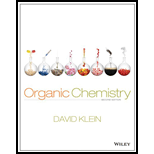
(a)
Interpretation:
The selective reagents used to accomplish the given target molecules transformation should be draw and identified.
Concept Introduction:
Addition Reaction: It is defined as
Anti-Markovnikov addition: These rules describe the regioselectivity (particular place in functional group) where the substituent is bonded to a less substituted carbon, rather than the more substituted carbon. This placed is quite unusual as carbon cations which are commonly formed during
Markovnikov addition: The addition reaction of parotic acids to a different alkene or alkyne, the hydrogen atom of
(b)
Interpretation:
The selective reagents used to accomplish the given target molecules transformation should be draw and identified.
Concept Introduction:
Addition Reaction: It is defined as chemical reaction in which two given molecules combines and forms product. The types of addition reactions are electrophilic addition, nucleophilic addition, free radical additions and cycloadditions. Generally, compounds with carbon-hetero atom bonds favors addition reaction.
Anti-Markovnikov addition: These rules describe the regioselectivity (particular place in functional group) where the substituent is bonded to a less substituted carbon, rather than the more substituted carbon. This placed is quite unusual as carbon cations which are commonly formed during alkene or alkyne reactions tend to favor the more substituted carbon.
Markovnikov addition: The addition reaction of parotic acids to a different alkene or alkyne, the hydrogen atom of
(c)
Interpretation:
The selective reagents used to accomplish the given target molecules transformation should be draw and identified.
Concept Introduction:
Addition Reaction: It is defined as chemical reaction in which two given molecules combines and forms product. The types of addition reactions are electrophilic addition, nucleophilic addition, free radical additions and cycloadditions. Generally, compounds with carbon-hetero atom bonds favors addition reaction.
Anti-Markovnikov addition: These rules describe the regioselectivity (particular place in functional group) where the substituent is bonded to a less substituted carbon, rather than the more substituted carbon. This placed is quite unusual as carbon cations which are commonly formed during alkene or alkyne reactions tend to favor the more substituted carbon.
Markovnikov addition: The addition reaction of parotic acids to a different alkene or alkyne, the hydrogen atom of
Want to see the full answer?
Check out a sample textbook solution
Chapter 10 Solutions
Organic Chemistry
 ChemistryChemistryISBN:9781305957404Author:Steven S. Zumdahl, Susan A. Zumdahl, Donald J. DeCostePublisher:Cengage Learning
ChemistryChemistryISBN:9781305957404Author:Steven S. Zumdahl, Susan A. Zumdahl, Donald J. DeCostePublisher:Cengage Learning ChemistryChemistryISBN:9781259911156Author:Raymond Chang Dr., Jason Overby ProfessorPublisher:McGraw-Hill Education
ChemistryChemistryISBN:9781259911156Author:Raymond Chang Dr., Jason Overby ProfessorPublisher:McGraw-Hill Education Principles of Instrumental AnalysisChemistryISBN:9781305577213Author:Douglas A. Skoog, F. James Holler, Stanley R. CrouchPublisher:Cengage Learning
Principles of Instrumental AnalysisChemistryISBN:9781305577213Author:Douglas A. Skoog, F. James Holler, Stanley R. CrouchPublisher:Cengage Learning Organic ChemistryChemistryISBN:9780078021558Author:Janice Gorzynski Smith Dr.Publisher:McGraw-Hill Education
Organic ChemistryChemistryISBN:9780078021558Author:Janice Gorzynski Smith Dr.Publisher:McGraw-Hill Education Chemistry: Principles and ReactionsChemistryISBN:9781305079373Author:William L. Masterton, Cecile N. HurleyPublisher:Cengage Learning
Chemistry: Principles and ReactionsChemistryISBN:9781305079373Author:William L. Masterton, Cecile N. HurleyPublisher:Cengage Learning Elementary Principles of Chemical Processes, Bind...ChemistryISBN:9781118431221Author:Richard M. Felder, Ronald W. Rousseau, Lisa G. BullardPublisher:WILEY
Elementary Principles of Chemical Processes, Bind...ChemistryISBN:9781118431221Author:Richard M. Felder, Ronald W. Rousseau, Lisa G. BullardPublisher:WILEY





